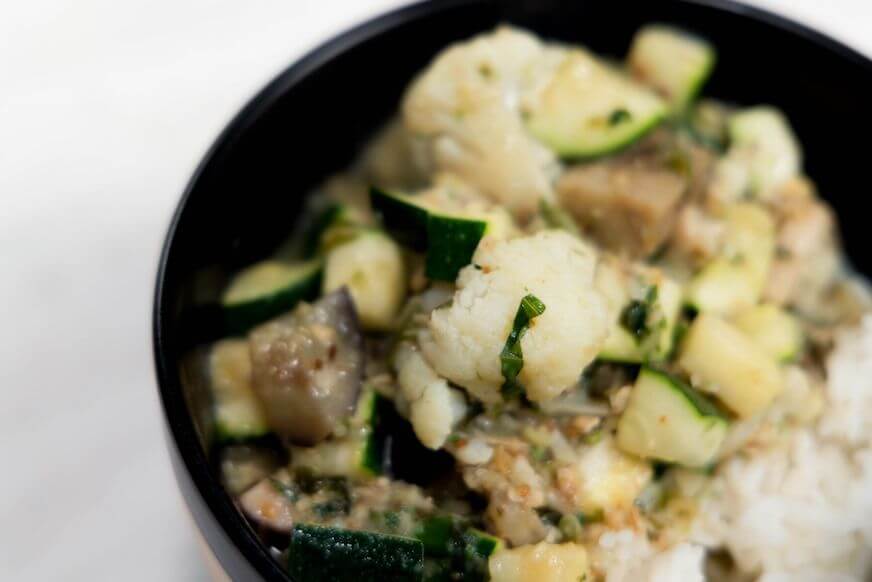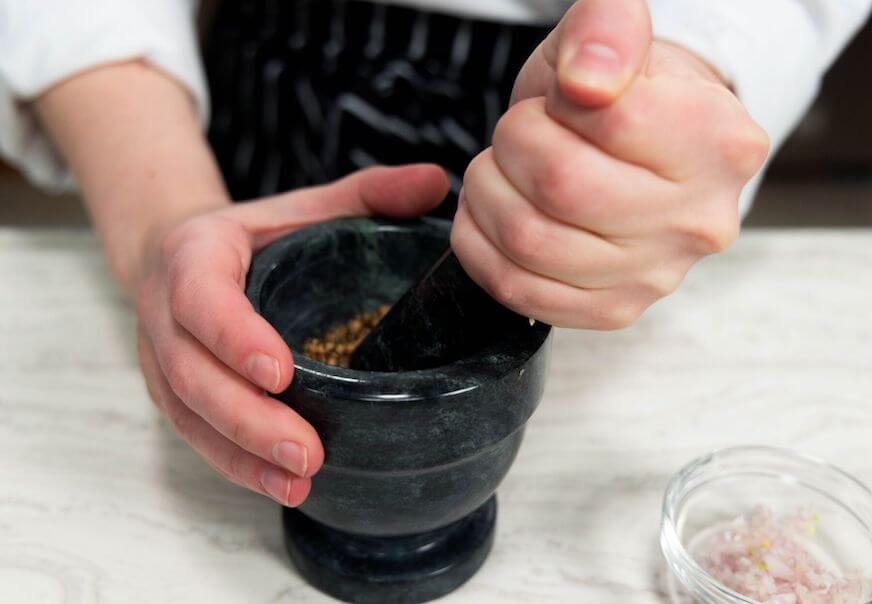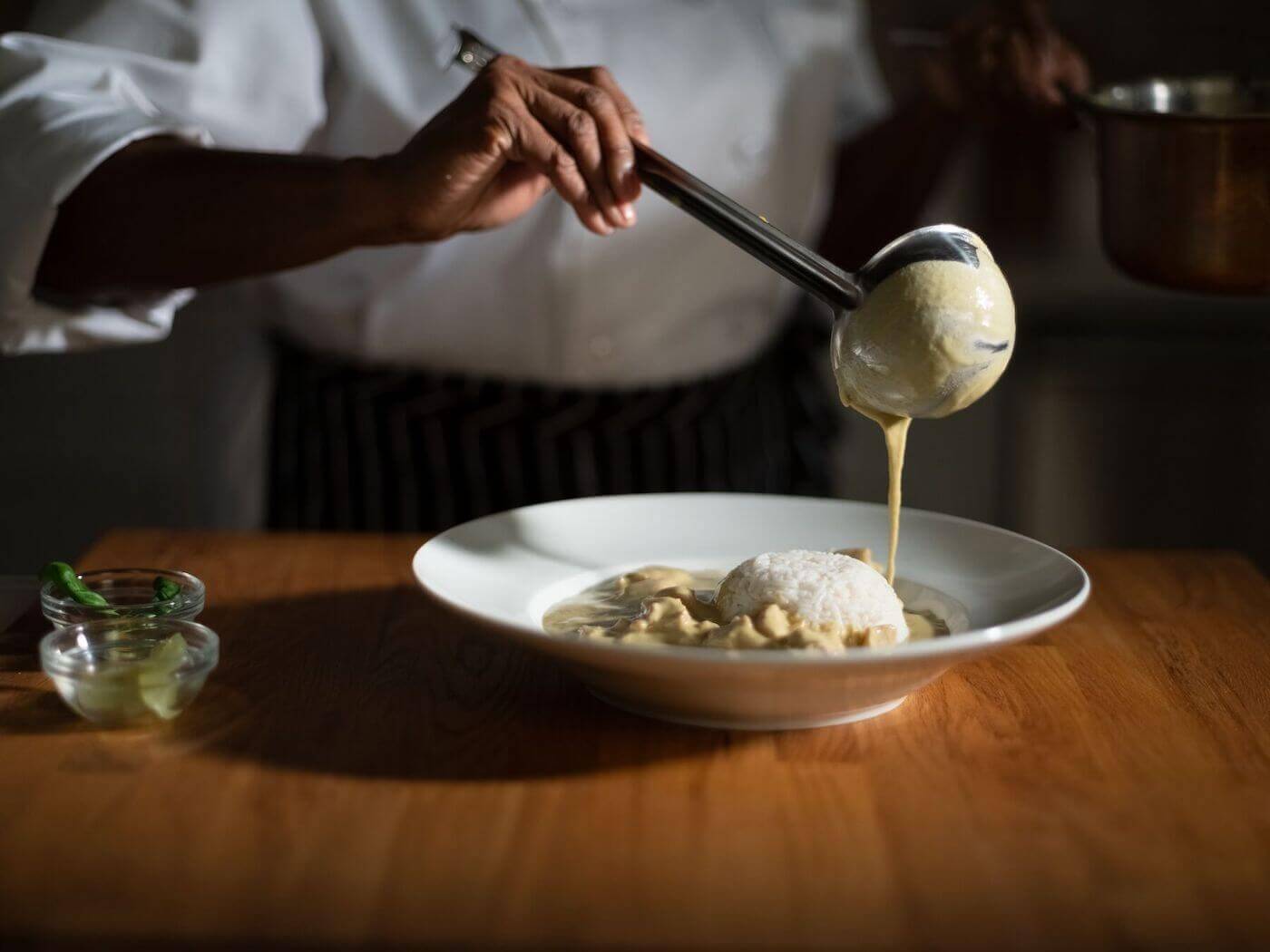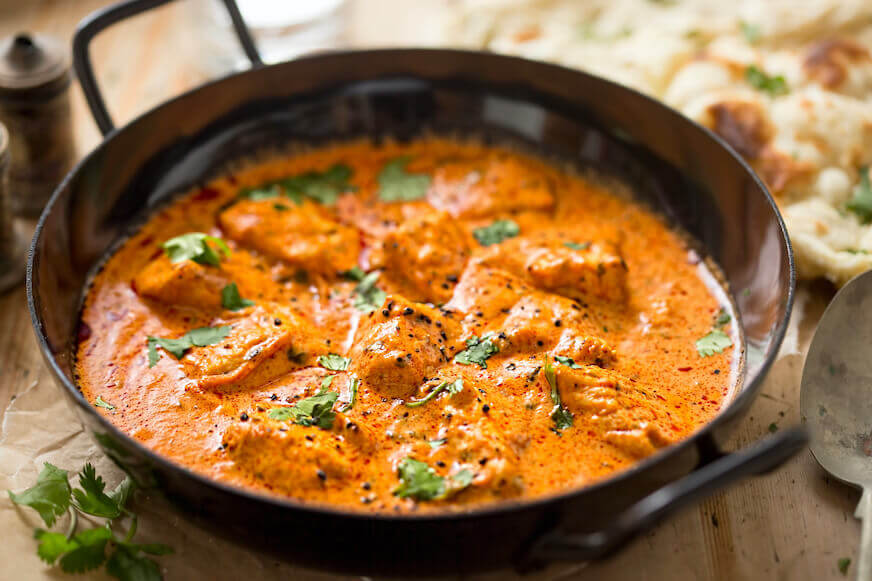A Guide to Curry: What It Is, How It’s Made, and More.
If you’ve ever devoured a rich bowl of curry, you may know that it’s practically the definition of “comfort food.” Usually ladled on top of a fluffy bowl of rice, curry warms the soul with its gravy-like consistency that can keep you full for hours on end.
So what is curry, what are the most common types, and how can you make it at home? Keep reading to dive into all of this and more in our Essential Guide to Curry!
What Is Curry?
Curry is a recipe that originated from the Indian subcontinent, and generally consists of an eclectic medley of native spices, herbs, and veggies. The most common curry ingredients may include cumin, coriander, turmeric, ginger, garlic, onions, chili peppers, and tomatoes. Usually, curries are prepared with a protein too, such as chicken, lamb, beef, tofu, chickpeas, or lentils.

A bowl of homemade green Thai curry served on rice.
You can eat it as a standalone dish, but most restaurants or markets around the globe will serve it with Basmati rice and warm, pillowy flatbread like pita or naan, for dunking purposes.
The History of Curry
Somewhere along the line, the word “curry” came to be applied to a vast number of South and Southeast Asian foods. For example, Thai green curry emanates a completely different flavor profile in comparison to Indian chicken korma, but both dishes are considered curry.
As it turns out, food historians trace the origination of the dish to the Indian subcontinent, where it is believed that British explorers borrowed the Indian word “Kari” meaning “sauce” and applied it to all of the spicy, saucy dishes the Indians were making at the time. Through British colonization as well as trade with the Far East, the curry cooking tradition began to proliferate across the southeast hemisphere. Today, many countries produce dishes that are called curries that bear a resemblance to the original Indian dishes such as korma and paneer curry.

Chef making paste for a green curry dish.
The Most Common Types of Curry
Depending on the region, curry around the world will usually emit different flavors, aromas, and spice levels. Let’s explore the most common types of curry you may come across.
Indian Curry
Although there are several different subtypes of Indian curry based on the region, the most popular Indian curries include butter chicken, chicken tikka masala, vindaloo, and korma. Several of these recipes will call for curry powder blends using coriander, cumin, chili powder, turmeric, and more, but may yield different consistencies and fragrances. For example, chicken tikka masala is especially hearty, since it requires simmering sweet tomato puree or paste and heavy cream together, along with garam masala and other spices. In India, curry is known to unite family and friends together—consumed quite frequently for any type of occasion.
Thai Curry
Thai curry is distinctly different from Indian curry, because of its base which usually starts with a curry paste, instead of a powder. Often, this may include ingredients such as garlic, chili peppers, Thai ginger, coriander, and lemongrass for extra tanginess. The Thai curry sauce gets its velvety-smooth consistency from the use of thick coconut milk—usually simmered with fish sauce and lime juice. When it comes to Thai curry variations, usually you can choose from green, red, yellow, panang, and massaman.
Japanese Curry
The British first introduced curry to Japan and it quickly evolved into a much thicker sauce, due to the “roux” base—a French cooking term described as a flour and fat thickening agent for soups and stews. Japanese curry is just as robust as other regions, with a variety of meats like beef or chicken, plus potatoes, carrots, and onions. Many Japanese may choose to eat curry served over rice and doctor it up with crunchy pickled veggies or soft-boiled eggs. In general, Japanese curry is slightly sweeter and milder in comparison to other variations.
How Curry Is Made
If you feel like putting on your serious “home cook hat” to assemble an authentic bowl of curry, you’ve come to the right place. Here’s how you can make one of the most popular curry dishes, Indian chicken curry, in three steps.
1. Create Your Gourmet Curry Base
Heat some oil in a pan and add in chopped yellow onion to saute until golden brown. Add in your homemade curry spice blend that may include fresh garlic, garam masala, coriander, turmeric, cumin, paprika, ginger, salt, and more. Saute this for a few minutes under medium heat until fragrant and golden brown.
2. Transform Into a Thick Sauce
Once the aroma intensifies, add chopped tomatoes and break them down until it becomes a thicker sauce. Simmer for another five to ten minutes.
3. Toss in Your Protein
Once the sauce reaches your desired consistency, you can add chicken pieces to cook in your curry sauce. At this point, you may want to consider pouring in heavy cream or coconut milk for added creaminess. Once all the ingredients meld together, serve your curry on top of rice, garnish with fresh cilantro, and enjoy!
Culinary & Pastry Career Survey
Culinary & Pastry Career Survey
What's your ideal culinary career? Answer 20 simple questions and see if your dream career gets revealed to you.

We’ve compiled of all of the essential questions into one handy guide: Career options, description of skill requirements, and more!


Take Your Home Cook Skills to the Next Level
As you can see, many parts of the world view curry as a wholesome cuisine staple—it’s packed with flavor and yields distinct fragrances, depending on the ingredients you choose to incorporate.
If you’d like to make delectable curry from scratch and uplevel your cooking skills, you can start right in the convenience of your home, by exploring 320+ online courses hosted by Escoffier Home Gourmet and America’s Test Kitchen Chef Instructors! You can delve into the most progressive cooking techniques and classic recipes, broken down step-by-step. And if you want to take your affinity for cooking to a professional level, check out Escoffier’s Online Culinary Arts degree and diploma programs.
Enjoyed this article? Read these next!
- How to Cook with a Cast Iron Skillet
- Cheddar Cheese: An Origin Story
- 7 Ways to Thicken Vegan Recipes
This article was originally published on May 14, 2014, and has since been updated.



